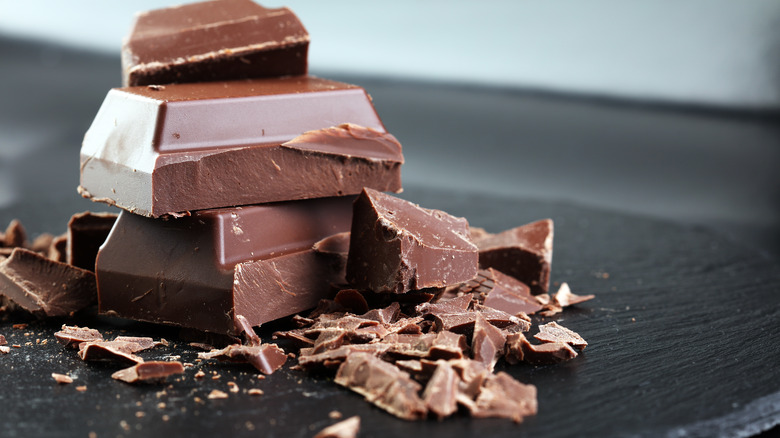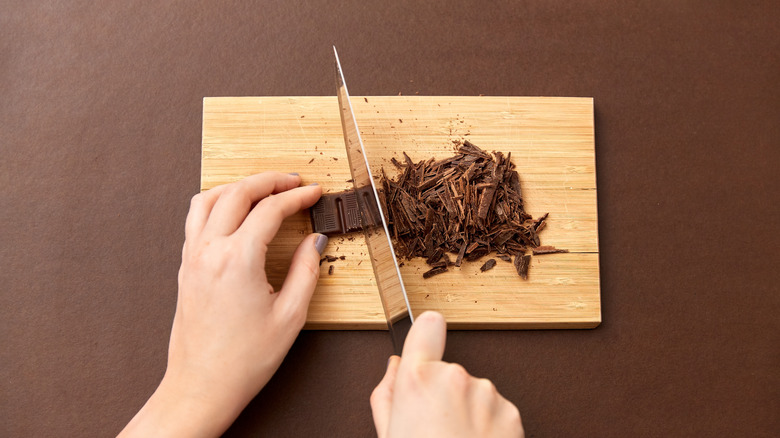You Should Use A Sifter When Baking With Chocolate. Here's Why
If you are baking with ingredients that tend to clump, such as flour, powdered sugar, or cocoa powder, you probably already know that it's best to sift them into your mixing bowl. As MasterClass explains, it allows for more even distribution, creating a smooth batter free from lumps. When it comes to solid mix-ins like nuts, dried fruit, or chocolate chips, sifting usually isn't necessary. However, if you're specifically adding chopped chocolate, you may want to make an exception.
According to Hancock Street's executive chef Ryan Schmidtberger (via Food & Wine), sifting chopped chocolate is an important step of the baking process. If you skip it, you may end up with a batter or dough that's different from what you expected.
The reason, as Chef Schmidtberger explained to Food & Wine magazine, is that whenever you chop up a chocolate bar, in addition to the actual chunks, you also end up with thin shavings. These shavings easily get lost in your batter or dough, ultimately changing the appearance of your baked goods once they come out of the oven. Unless you're OK with streaks or specks of chocolate, you'll want to sift the chocolate beforehand to remove these shavings.
How to minimize shavings when chopping chocolate
Sifting chopped chocolate inevitably means one thing: You lose a bit of chocolate in the process. But depending on how well you chopped your chocolate in the first place, you may end up with more or less extra chocolate shavings.
For best results, Real Simple recommends slightly softening the chocolate beforehand. You can achieve this by microwaving it for very short 10-second intervals. Stop right when the chocolate is shiny at the corners; otherwise, you'll just get melted chocolate. Slightly softened chocolate allows the knife to go through the chocolate a lot easier, and as a result the amount of shavings is significantly less.
It also helps to use a serrated knife, according to Kitchn. While you might assume that the serrated teeth would create more chocolate dust — and resultant lost chocolate — it actually has the opposite effect. As Real Simple explains, the serrations give the knife a better grip on the chocolate, whereas paring or chef's knives tend to slide around and produce excess chocolate dust.
By minimizing the amount of chocolate shavings and dust when you chop your chocolate, you'll find there's significantly more that remains as whole, usable pieces when you go to sift the smaller pieces out.

